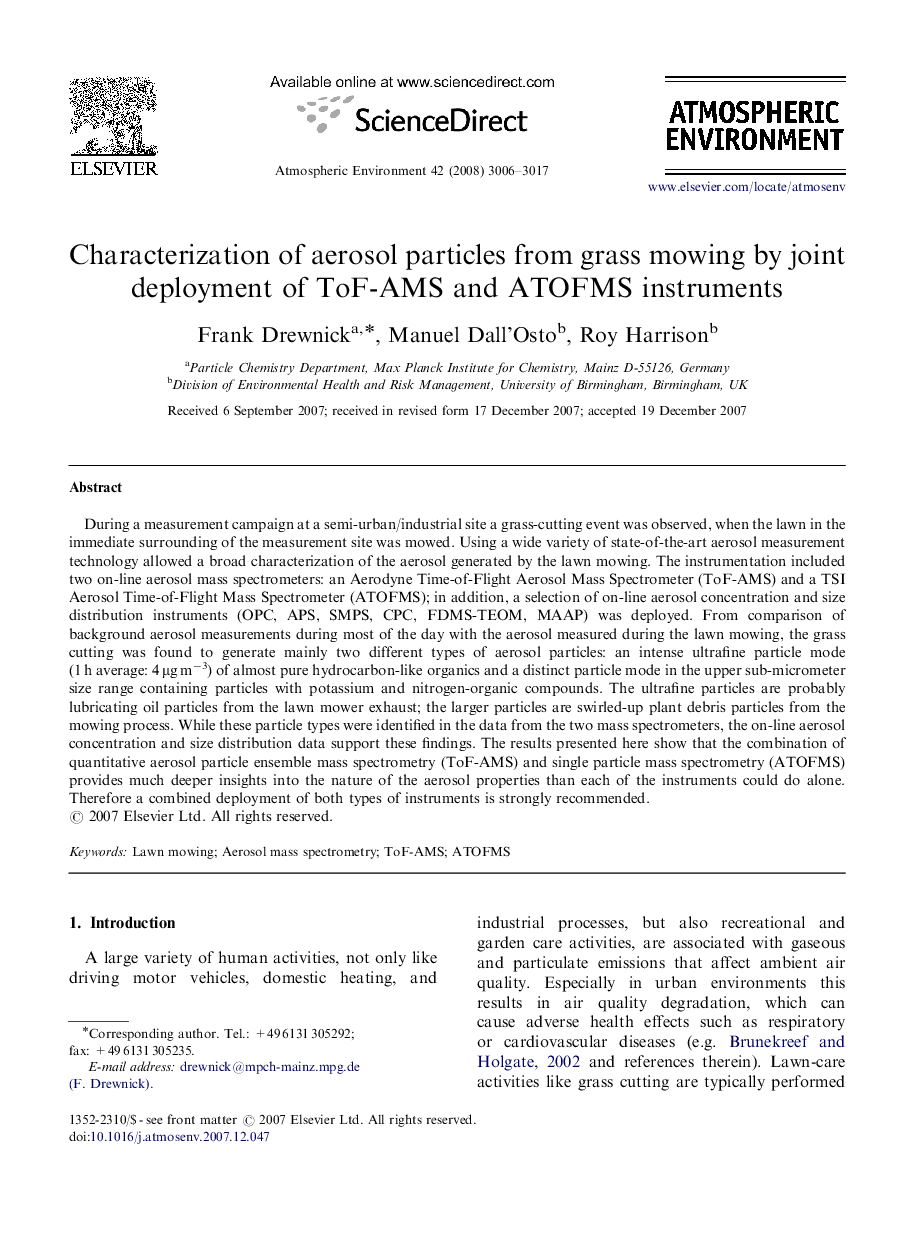| Article ID | Journal | Published Year | Pages | File Type |
|---|---|---|---|---|
| 4442471 | Atmospheric Environment | 2008 | 12 Pages |
During a measurement campaign at a semi-urban/industrial site a grass-cutting event was observed, when the lawn in the immediate surrounding of the measurement site was mowed. Using a wide variety of state-of-the-art aerosol measurement technology allowed a broad characterization of the aerosol generated by the lawn mowing. The instrumentation included two on-line aerosol mass spectrometers: an Aerodyne Time-of-Flight Aerosol Mass Spectrometer (ToF-AMS) and a TSI Aerosol Time-of-Flight Mass Spectrometer (ATOFMS); in addition, a selection of on-line aerosol concentration and size distribution instruments (OPC, APS, SMPS, CPC, FDMS-TEOM, MAAP) was deployed. From comparison of background aerosol measurements during most of the day with the aerosol measured during the lawn mowing, the grass cutting was found to generate mainly two different types of aerosol particles: an intense ultrafine particle mode (1 h average: 4 μg m−3) of almost pure hydrocarbon-like organics and a distinct particle mode in the upper sub-micrometer size range containing particles with potassium and nitrogen-organic compounds. The ultrafine particles are probably lubricating oil particles from the lawn mower exhaust; the larger particles are swirled-up plant debris particles from the mowing process. While these particle types were identified in the data from the two mass spectrometers, the on-line aerosol concentration and size distribution data support these findings. The results presented here show that the combination of quantitative aerosol particle ensemble mass spectrometry (ToF-AMS) and single particle mass spectrometry (ATOFMS) provides much deeper insights into the nature of the aerosol properties than each of the instruments could do alone. Therefore a combined deployment of both types of instruments is strongly recommended.
